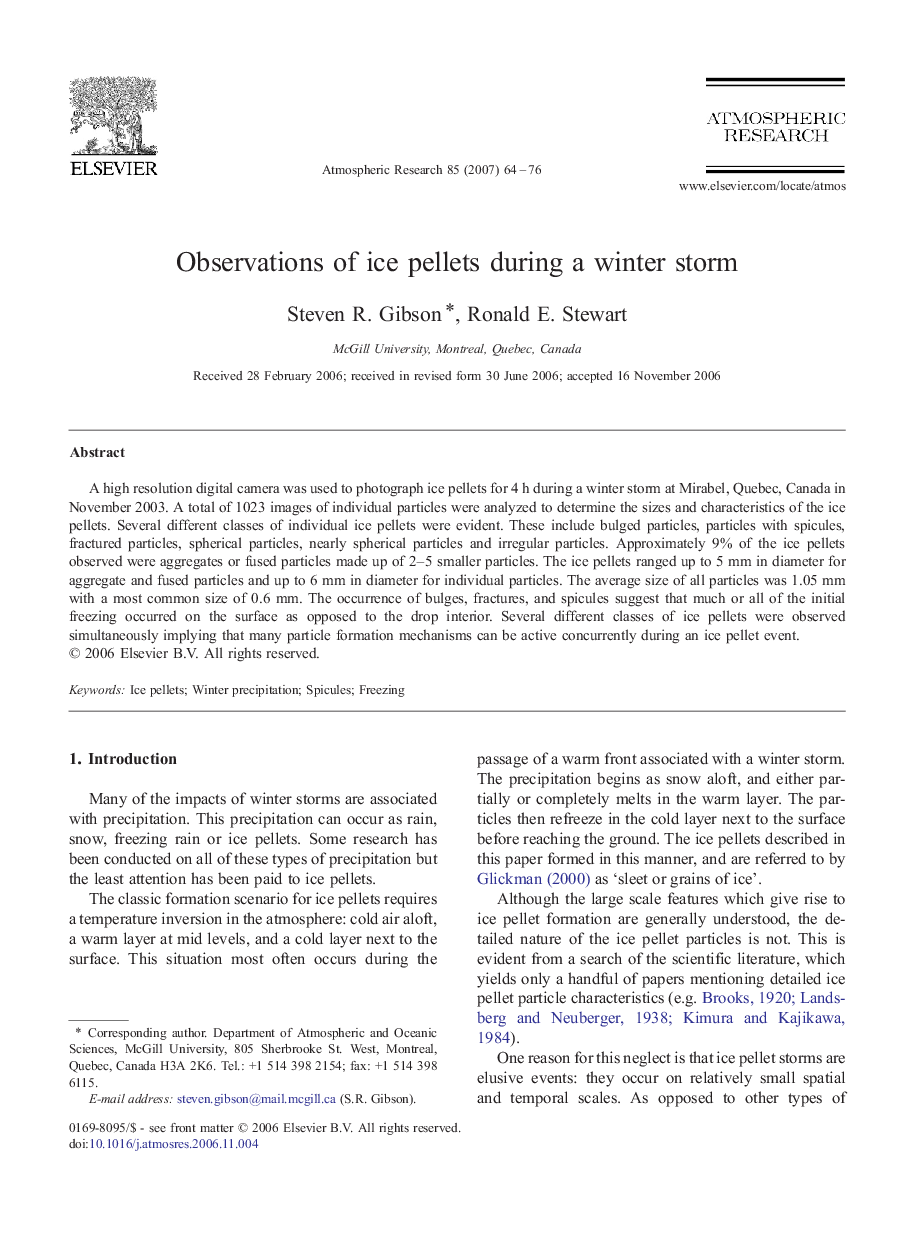| Article ID | Journal | Published Year | Pages | File Type |
|---|---|---|---|---|
| 4451470 | Atmospheric Research | 2007 | 13 Pages |
A high resolution digital camera was used to photograph ice pellets for 4 h during a winter storm at Mirabel, Quebec, Canada in November 2003. A total of 1023 images of individual particles were analyzed to determine the sizes and characteristics of the ice pellets. Several different classes of individual ice pellets were evident. These include bulged particles, particles with spicules, fractured particles, spherical particles, nearly spherical particles and irregular particles. Approximately 9% of the ice pellets observed were aggregates or fused particles made up of 2–5 smaller particles. The ice pellets ranged up to 5 mm in diameter for aggregate and fused particles and up to 6 mm in diameter for individual particles. The average size of all particles was 1.05 mm with a most common size of 0.6 mm. The occurrence of bulges, fractures, and spicules suggest that much or all of the initial freezing occurred on the surface as opposed to the drop interior. Several different classes of ice pellets were observed simultaneously implying that many particle formation mechanisms can be active concurrently during an ice pellet event.
